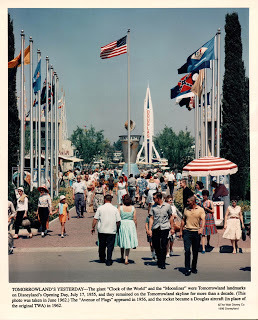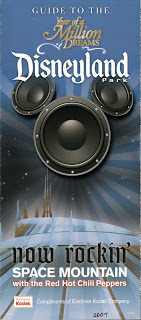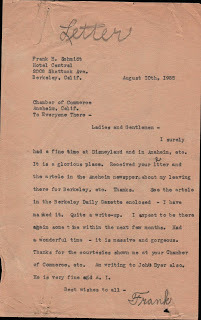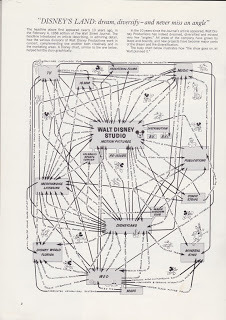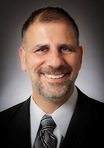Sam Gennawey's Blog, page 8
April 25, 2013
Exceptional, Acceptable or Regrettable
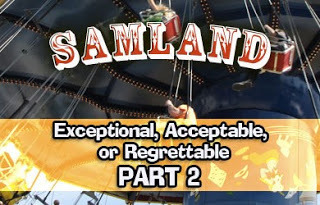
How do you get people to evaluate and document what they see and how they feel within the environments that they live, work, and play? That is a question I am frequently asked during my day job. After facilitating something north of 750 community meetings and charrettes, I have come to learn that a process built on curiosity, clarity, creativity, will generally gain the confidence of the people and they will feel the magic (when apprehension turns into awe and delight) and work toward a great big beautiful tomorrow. Given the chance, the right tools, and the right strategy, community stakeholders tend to make good choices. Amazing, eh? Like I said, it’s my day job.Do you have to go to school to learn what are the proper elements that make up spaces that are alive, functional, and beautiful? No. Inside, everybody knows what is right. Most of the time they just do not know how to articulate what they are feeling. My experience has shown me that the best places are those that share these three elements in abundance; quality, variety, and surprise. Places that have a higher degree of life tend to be filled with such moments. Isn’t that why we go back to the parks so often and fight to keep them whole? Although each of these elements may seem subjective, ask enough people and you will be amazed how common their wants and desires are.When you look at a specific place, I try to keep this in mind. Every act of construction should be an opportunity to either repair, enhance or embellish the public realm. If not, just leave it alone. Kind of like the theory that people are less critical when rides change at the parks as long as they are being replaced by something superior.With all of that said, you cannot manage something you cannot measure. So we have to find some sort of a ranking system. I suggest you see and what you experience asexceptional, acceptable or regrettable. It is a fun game and if you will indulge me, I would like to give it a try as it applies to the Disneyland Resort.
READ MORE AT MICECHAT
Published on April 25, 2013 08:01
April 23, 2013
The Atomic Age
Published on April 23, 2013 11:00
April 22, 2013
What Were They Thinking?
Published on April 22, 2013 20:00
April 18, 2013
August 1955 - One Man's Early Impression
Published on April 18, 2013 06:00
April 17, 2013
Two Meetings
IT TAKES PEOPLE TO MAKE THE DREAM A REALITY
On May 27, 1975, Walt Disney Productions (WDP) hosted the 27th annual American Society for Personnel Administrators (ASPA) conference at the Contemporary Resort in Walt Disney World. The ASPA represented personnel executives from America’s largest corporations. More than 1,000 companies were represented at the conference. The theme for the conference was “Accountability plus Productivity.” Creative, eh?
The Welcoming address was given by Card Walker, President of Walt Disney Productions. At the time, Disney had just over 17,000 employees worldwide. In reviewing what guests said about the Disney parks at the time, Walker said, “First, they comment about the cleanliness of our operation, second, they comment about the friendliness and courtesy of our employees, and third, they remark that we offer a good show.”
It was Walker’s opinion that the people who worked for him made more of a difference in the guest experience than any of the sophisticated technical achievements on display at the parks. Especially at Walt Disney World, which was meant to be a “total recreation environment.” For Disney, the goal was to feature “the predictability of motivated employees.” That goal was the connection to the theme of the conference.
At the time, management was concentrating on making sure each employee understands that they are not a “spare tire, but rather a vital wheel in keeping us on the road.” To that end, Disney had instituted “preventive maintenance” programs. Walker asks, “Do we show the same concern for each employee that we show for each machine?”
Walker reminded the audience that the respect for the employees started with Walt Disney. It was Walt who said, “I use the whole plant for ideas. If the janitor has a good idea I’ll use it.” The only thing Walt demanded was, “If you bring me a problem, have a solution. Lots of times the solution is the right answer and it’s just a matter of saying O.K.” Walt’s approach was based on the “Four C’s” for success.
Curiosity - “[Walt] was always exploring new paths and experimenting with new technologies.”
Confidence - “When you go into a project, have faith in your ability to do it right.”
Courage - “When you believe in something, believe in it all the way.”
Constancy - “Stick to it...and work hard to do the best possible job.”
Through a strong commitment to training, Walker said, employees would learn that “our world is often make-believe, but we create make-believe with real people.” Meeting the guest’s expectations was not a “happy accident.” Have things changed much over the past 40 years? Is the company as committed to the well-being of the Cast Members?
EPCOT: THE SALES PITCH
EPCOT would not have been possible without the cooperation and sponsorship dollars from some of America’s largest corporations. It could be said that the first date in that courtship came on May 15, 1976 at the 1st EPCOT Future Technology Conference, hosted by Walt Disney Productions (WDP). The exclusive event was held for forty “key representatives from the scientific, business and academic communities” according to a press release.
Walt Disney Productions Chairman of the Board Donn B. Tatum was the man responsible for making the pitch to get these organizations to partner with the entertainment company and make Walt’s last dream come true (or some version of it). For over 10 years, the Disney team had been working on EPCOT and now they wanted to involve corporate experts in energy technologies, agriculture, and food production.
How could an entertainment company be so bold as to think they could change the world? Look at Disneyland. Through the operation of that facility, Disney gained “valuable experience in such areas as transportation, electronic systems, and the handling of large numbers of people with efficiency and personal care.” This success lead to Walt’s fascination with urban planning. Anything Walt was interested in became a priority at the Studio. Tatum claimed that Walt wanted EPCOT to “serve as an example to the world of the ability of the free enterprise system to meet the needs of people in living and working and moving about.”
The first phase for the development of Walt Disney World was the Magic Kingdom, the resorts, and more than $150 million for the necessary infrastructure. Turning a swamp into a vacation resort was proof that the Disney organization had the right stuff. The next step was to attain the same level of guest capacity of Disneyland (70,000 guests). This was accomplished with the addition of Space Mountain and the PeopleMover in 1975 (apparently the second the largest expansion of the Magic Kingdom right after the New Fantasyland).
The next phase would be much more ambitious. Tatum suggested that EPCOT was meant to be “an on-going meeting place where creative people of science and industry from around the world may gather to discuss and communicate concerning specific solutions to the specific needs of mankind.” Disney needed help from outside experts. EPCOT was to become a place where companies can “develop, demonstrate, and communicate prototype concepts and new systems and technologies, and their application in creating better ways of living.” Tatum felt that technological changes were happening so rapidly that “the average person is perplexed and, in all too many cases, in a state of despair.” That is why EPCOT was needed.
What Disney could bring was “long experience in communication with the public through visual and tangible means - many of which were innovative and usually effective - and we had an understanding of the importance of and empathy with science and technology.” EPCOT would become the showcase “from which, the information essential for the future can be gathered, disseminated, and most of all, communicated in a meaningful way.”
WDP also had unprecedented powers with the creation of the Reedy Creek Improvement District on May 12, 1967. For the first time, a company could have a partner “with broad, sweeping power to allow and encourage the introduction, testing, and demonstration of new ideas, materials, and systems, based on standards of performance. What other organization but Disney could provide that? Some of the early examples of this forward thinking included the AVAC trash disposal system, the lightweight steel modular construction of the two hotels (the Contemporary and the Polynesian), and a progressive building code.
By the mid-1970s, the idea of a city in Florida with a permanent population was dead. WDP was working on plans to build a form of community and I will get to that in a future column. Instead, for EPCOT the leadership developed a strategy that focused on a under appreciated Disney strength, something they discovered quite by accident, during World War II. While making training films for the US military, Disney learned how to to communicate complex ideas in an entertaining way. In order to stay true to Walt’s dream, this would be the pitch to EPCOT’s potential partners. This was the purpose of the 1st EPCOT Future Technology Conference.
Published on April 17, 2013 08:56
April 16, 2013
Water and Wires
Here is more from the original 1970 press releases for Walt Disney World
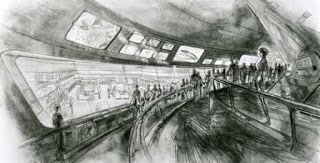 RCA would be a sponsor and they would be responsible for providing the telecommunications system for the entire resort. This is a drawing of the RCA Information-Communication nerve center.
RCA would be a sponsor and they would be responsible for providing the telecommunications system for the entire resort. This is a drawing of the RCA Information-Communication nerve center.
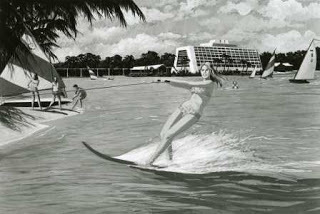
Walt Disney World was alway meant to be more than just a theme park. It was designed to be an all-inclusive resort. One of the major amenities was the variety of water recreational opportunities including sailing, boating, fishing, and water-skiing. The Disney built Seven Seas Lagoon would extend “the existing lake into a three-mile pleasure waterway, dotted with natural and man-made islands.” The Resort promised, “aquatic spectacles and sports, while at the same time retaining its often spectacular beauty.” The “lake and lagoon have already been lined with broad, sandy beaches for sunning and swimming.
 RCA would be a sponsor and they would be responsible for providing the telecommunications system for the entire resort. This is a drawing of the RCA Information-Communication nerve center.
RCA would be a sponsor and they would be responsible for providing the telecommunications system for the entire resort. This is a drawing of the RCA Information-Communication nerve center. 
Walt Disney World was alway meant to be more than just a theme park. It was designed to be an all-inclusive resort. One of the major amenities was the variety of water recreational opportunities including sailing, boating, fishing, and water-skiing. The Disney built Seven Seas Lagoon would extend “the existing lake into a three-mile pleasure waterway, dotted with natural and man-made islands.” The Resort promised, “aquatic spectacles and sports, while at the same time retaining its often spectacular beauty.” The “lake and lagoon have already been lined with broad, sandy beaches for sunning and swimming.
Published on April 16, 2013 08:00
April 15, 2013
The Contemporary Resort Press Release 1969
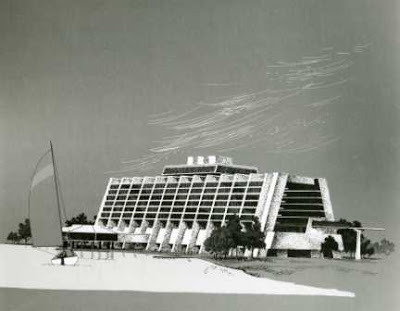
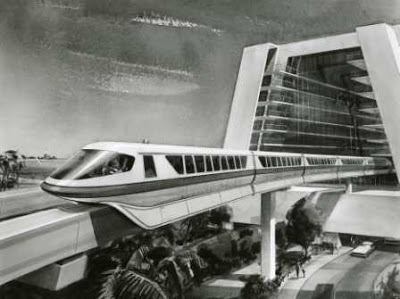
Back in April 1969, it was announced that Disney’s “Vacation Kingdom” would consist of two resort hotels. The 360-room “tomorrow” hotel would include a ballroom/convention center. The 10-story, 750-room Contemporary hotel would be much larger than originally planned. This was the “flagship” hotel on property and was designed with a ballroom capable of accommodating 2,000 guests for banquets and 3,000 in theater-style seating. It’s most notable features would be the “spectacular open-mall lobby longer than a football field, with an 80-foot ceiling” and the Walt Disney World-Allege monorail train running through the space.
Published on April 15, 2013 08:00
April 10, 2013
Harrison "Buzz" Price Window Dedication
On April 9, 2013, Disneyland executives unveiled a tribute window on Main Street dedicated to Harrison "Buzz" Price. Below are his son David's comments that he delivered to the audience.
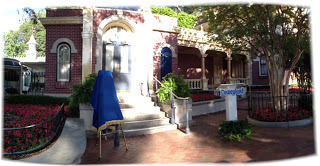
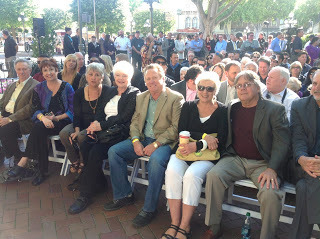
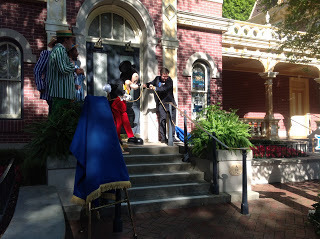
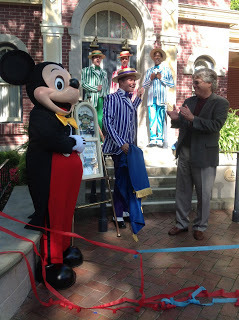
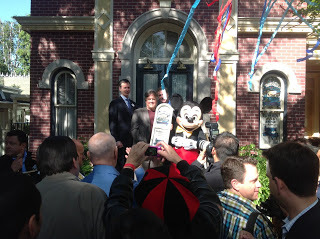
HARRISON “BUZZ” PRICE WINDOW DEDICATION - APRIL 9, 2013
Good morning everyone!
I'm David Price, son of "Buzz" and Anne Price. While Dad and Mom are no longer with us, the Price siblings and our families along with friends and colleagues are here in full force. Be assured that Buzz and Annie are at the other end of Main Street cheering us on.
On behalf of my wife Alicia and I, my brother Bret and his wife Lynn, my sister Dana, and my sister Holly and her husband Al, along with our children and close friends, we want to extend our gratitude to the Walt Disney Company, Walt Disney Imagineering and Disneyland for organizing this very special dedication.
I also want to thank an amazing bunch of Disney volunteers and enthusiasts that have embraced this dedication as well as the many community causes that they support.
Dad would be grinning ear to ear about his window dedication on Main Street honoring his role in the creation of Disneyland. The creative work leading to the opening of Disneyland was truly a transformational moment. Buzz often said that he was incredibly lucky to be around for it. That's an easy truth but it hardly explains the how and the why of it.
Simply put, Buzz was the right man at the right time. His special brand of humor, wit, passion and intelligence resonated with two brothers who would launch a revolution in family entertainment and destination attractions.
Buzz's "Yes If" approach to creative thinking allowed Walt and Roy to move forward with their ideas in a manner that changed our world. His "Yes If" approach was also essential for giving direction and balance to a dynamic and creative attractions industry inspired by the vision and success of Walt Disney.
Where did Buzz's "Yes If" approach spring from? He most certainly understood it's practical dimensions, but he also appreciated it's application when you're surrounded by creative thinkers and visionaries. His "Yes If" approach stands as a Golden Rule for creative thinking and problem solving.
While Buzz could drill down into numbers with a focus that boarded on obsession, he also knew how to translate numbers and economic data into meaningful and easily understood terms. This "Yes If" approach combined with his intelligence, common sense and experience enabled him to mathematically quantify for investors, creators and operators the meaningful business investment opportunity used to guide the development of Disneyland, Disney World, other theme parks and wide ranging cultural, education and sports related projects.
It all began right here in Anaheim, the City that Buzz recommended as the best location for Walt's new park - Disneyland. With Walt's encouragement Buzz also meet with Gene Autry with the purpose of bringing the Angels to Anaheim.
It was a new era for Orange County and the dawn of an exciting and robust Creative Economy driven by the arts, design and entertainment. Today the Creative Economy ranks 4th out of 66 industry clusters in greater Los Angeles. Supporting one in eight jobs in the region in 2011, the Creative Economy had a total regional output of $230 billion in revenue annually.
With Disneyland a success, Walt and Roy asked Buzz to study locations in Florida for another park, and in 1963 Buzz recommended the Orlando area. These are some of the reasons Dad was named a Disney Legend and why the Themed Entertainment Association honored Buzz as the first recipient of the industry’s “Lifetime Achievement Award” – which two year ago was re-named The Buzz Price Award for Lifetime Achievement by TEA.
Towards the end of Walt's life, he again asked Buzz to take over the special task of completing his vision for a multi-disciplined visual performing arts school - California Institute of the Arts. Opening in 1961, Cal Arts has emerged as one of the Nation's top educational institutions directed solely at training and cultivating the next generation of creative thinkers, designers and artists in our Creative Economy.
So what was it like living with a Legend at home? When you're that close to it, it was hard to see. I began to understand more fully the dimension of the Man when I started working with him in my early thirties. That's when I met the mentor, the colleague, the collaborator, the teacher. He could stop you in your tracks with a penetrating question, split your guts with his humor, and entertain anyone within hearing range with his one liners.
As small children growing up in Los Angeles, we had no way of knowing that dad's home office next to our game room would be the place where his early work for Walt and Roy began. I remember clearly his well organized assortment of 3-ring binders, a readily available slide ruler, stacks of neatly piled papers and how each of us took turns sharpening pencils.
What is warmly remembered too is the Price children receiving each Christmas a large wrapped box from Walt filled with an assortment of Disney toys. It was a child's fantasy. It would have been a treasure trove for a collector had they not disappeared as children's toys often do. Someone ought to make a movie of that.
As children we turned our front yard into a CEC - a Children's Entertainment Center - with miniature golf courses, games of chance and lemonade stands. All the kids in the neighborhood joined in. It became our fantasy land.
Later on when Walt and Roy started looking at the prospects for a world class year-round Alpine Resort in Mineral King, California, Buzz conducted a study of its recreation potentials and the family picked up skiing as the Go To choice for our Holidays
In later years my siblings and I each found our path into the arts: my brother Bret as a successful sculptor; my twin sister Dana as an artist; my sister Holly as a professional choral singer; and myself as an architect and planner in the attractions industry. We were all encouraged by two amazing parents who modeled for us the adventure that comes when you engage life.
Dad always gave Mom the credit. Others might say behind every great man is a great woman. Bottom line, Dad led the way.
The joy lives on as it does each day for the thousands of guests walking down Main Street, Disneyland. Dad's Window looks out, a testament to his life and the impact he made. Our family along with our children, grandchildren, future family members and his many friends and colleagues, can now walk by and shout with joy - Thank you Buzz. I'm Going To Disneyland!
1





HARRISON “BUZZ” PRICE WINDOW DEDICATION - APRIL 9, 2013
Good morning everyone!
I'm David Price, son of "Buzz" and Anne Price. While Dad and Mom are no longer with us, the Price siblings and our families along with friends and colleagues are here in full force. Be assured that Buzz and Annie are at the other end of Main Street cheering us on.
On behalf of my wife Alicia and I, my brother Bret and his wife Lynn, my sister Dana, and my sister Holly and her husband Al, along with our children and close friends, we want to extend our gratitude to the Walt Disney Company, Walt Disney Imagineering and Disneyland for organizing this very special dedication.
I also want to thank an amazing bunch of Disney volunteers and enthusiasts that have embraced this dedication as well as the many community causes that they support.
Dad would be grinning ear to ear about his window dedication on Main Street honoring his role in the creation of Disneyland. The creative work leading to the opening of Disneyland was truly a transformational moment. Buzz often said that he was incredibly lucky to be around for it. That's an easy truth but it hardly explains the how and the why of it.
Simply put, Buzz was the right man at the right time. His special brand of humor, wit, passion and intelligence resonated with two brothers who would launch a revolution in family entertainment and destination attractions.
Buzz's "Yes If" approach to creative thinking allowed Walt and Roy to move forward with their ideas in a manner that changed our world. His "Yes If" approach was also essential for giving direction and balance to a dynamic and creative attractions industry inspired by the vision and success of Walt Disney.
Where did Buzz's "Yes If" approach spring from? He most certainly understood it's practical dimensions, but he also appreciated it's application when you're surrounded by creative thinkers and visionaries. His "Yes If" approach stands as a Golden Rule for creative thinking and problem solving.
While Buzz could drill down into numbers with a focus that boarded on obsession, he also knew how to translate numbers and economic data into meaningful and easily understood terms. This "Yes If" approach combined with his intelligence, common sense and experience enabled him to mathematically quantify for investors, creators and operators the meaningful business investment opportunity used to guide the development of Disneyland, Disney World, other theme parks and wide ranging cultural, education and sports related projects.
It all began right here in Anaheim, the City that Buzz recommended as the best location for Walt's new park - Disneyland. With Walt's encouragement Buzz also meet with Gene Autry with the purpose of bringing the Angels to Anaheim.
It was a new era for Orange County and the dawn of an exciting and robust Creative Economy driven by the arts, design and entertainment. Today the Creative Economy ranks 4th out of 66 industry clusters in greater Los Angeles. Supporting one in eight jobs in the region in 2011, the Creative Economy had a total regional output of $230 billion in revenue annually.
With Disneyland a success, Walt and Roy asked Buzz to study locations in Florida for another park, and in 1963 Buzz recommended the Orlando area. These are some of the reasons Dad was named a Disney Legend and why the Themed Entertainment Association honored Buzz as the first recipient of the industry’s “Lifetime Achievement Award” – which two year ago was re-named The Buzz Price Award for Lifetime Achievement by TEA.
Towards the end of Walt's life, he again asked Buzz to take over the special task of completing his vision for a multi-disciplined visual performing arts school - California Institute of the Arts. Opening in 1961, Cal Arts has emerged as one of the Nation's top educational institutions directed solely at training and cultivating the next generation of creative thinkers, designers and artists in our Creative Economy.
So what was it like living with a Legend at home? When you're that close to it, it was hard to see. I began to understand more fully the dimension of the Man when I started working with him in my early thirties. That's when I met the mentor, the colleague, the collaborator, the teacher. He could stop you in your tracks with a penetrating question, split your guts with his humor, and entertain anyone within hearing range with his one liners.
As small children growing up in Los Angeles, we had no way of knowing that dad's home office next to our game room would be the place where his early work for Walt and Roy began. I remember clearly his well organized assortment of 3-ring binders, a readily available slide ruler, stacks of neatly piled papers and how each of us took turns sharpening pencils.
What is warmly remembered too is the Price children receiving each Christmas a large wrapped box from Walt filled with an assortment of Disney toys. It was a child's fantasy. It would have been a treasure trove for a collector had they not disappeared as children's toys often do. Someone ought to make a movie of that.
As children we turned our front yard into a CEC - a Children's Entertainment Center - with miniature golf courses, games of chance and lemonade stands. All the kids in the neighborhood joined in. It became our fantasy land.
Later on when Walt and Roy started looking at the prospects for a world class year-round Alpine Resort in Mineral King, California, Buzz conducted a study of its recreation potentials and the family picked up skiing as the Go To choice for our Holidays
In later years my siblings and I each found our path into the arts: my brother Bret as a successful sculptor; my twin sister Dana as an artist; my sister Holly as a professional choral singer; and myself as an architect and planner in the attractions industry. We were all encouraged by two amazing parents who modeled for us the adventure that comes when you engage life.
Dad always gave Mom the credit. Others might say behind every great man is a great woman. Bottom line, Dad led the way.
The joy lives on as it does each day for the thousands of guests walking down Main Street, Disneyland. Dad's Window looks out, a testament to his life and the impact he made. Our family along with our children, grandchildren, future family members and his many friends and colleagues, can now walk by and shout with joy - Thank you Buzz. I'm Going To Disneyland!
1
Published on April 10, 2013 09:25
April 8, 2013
The Org Chart
Published on April 08, 2013 09:00
April 5, 2013
NOTES FROM WDW PART 2
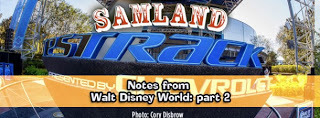
Time to return to the right coast (WDW and Universal) and work out my Demons of Happiness that author Ray Bradbury once spoke of. I bring to this challenge my bias as a native Southern Californian and longtime Disneylander. Below are more random notes on the state of the “world” through my pair of eyes. You can find Part One of my Disney World journey HERE. I encourage you to add your thoughts below. Together, maybe we will find the truth.
READ MORE HERE.
Published on April 05, 2013 09:00

